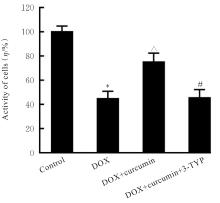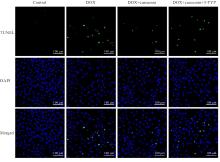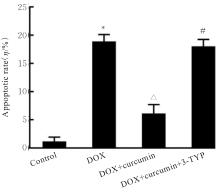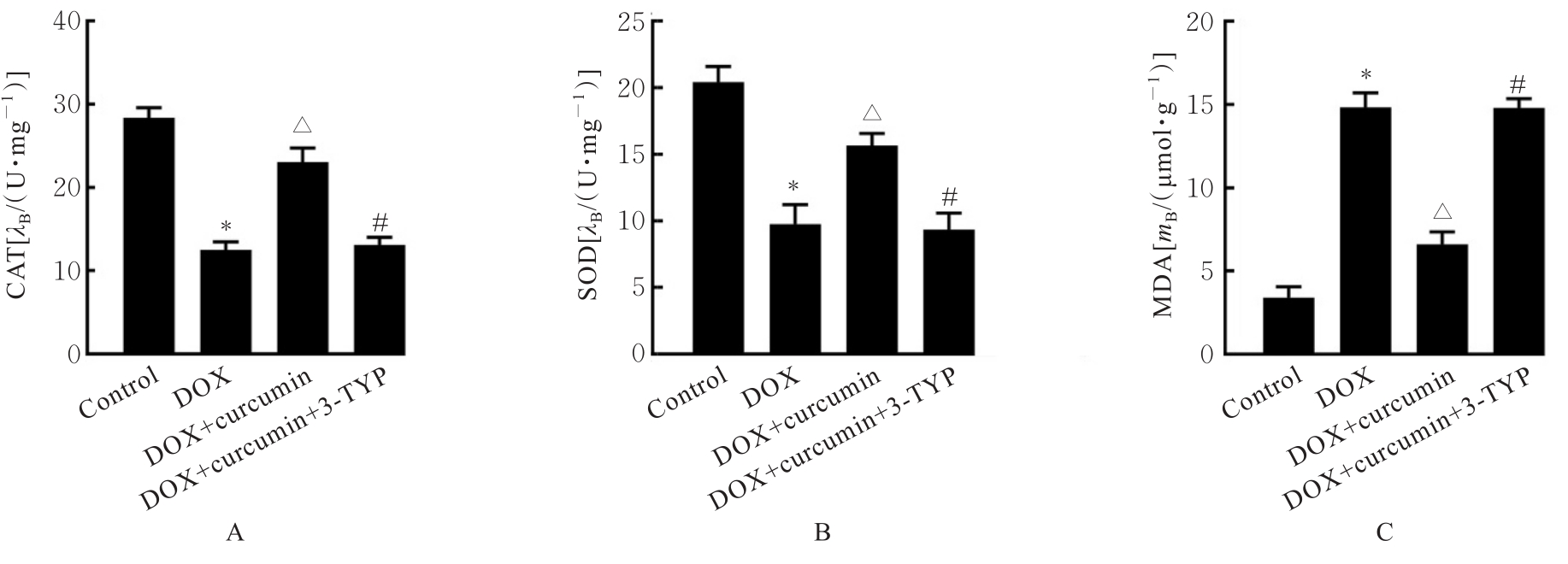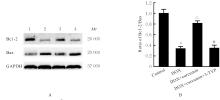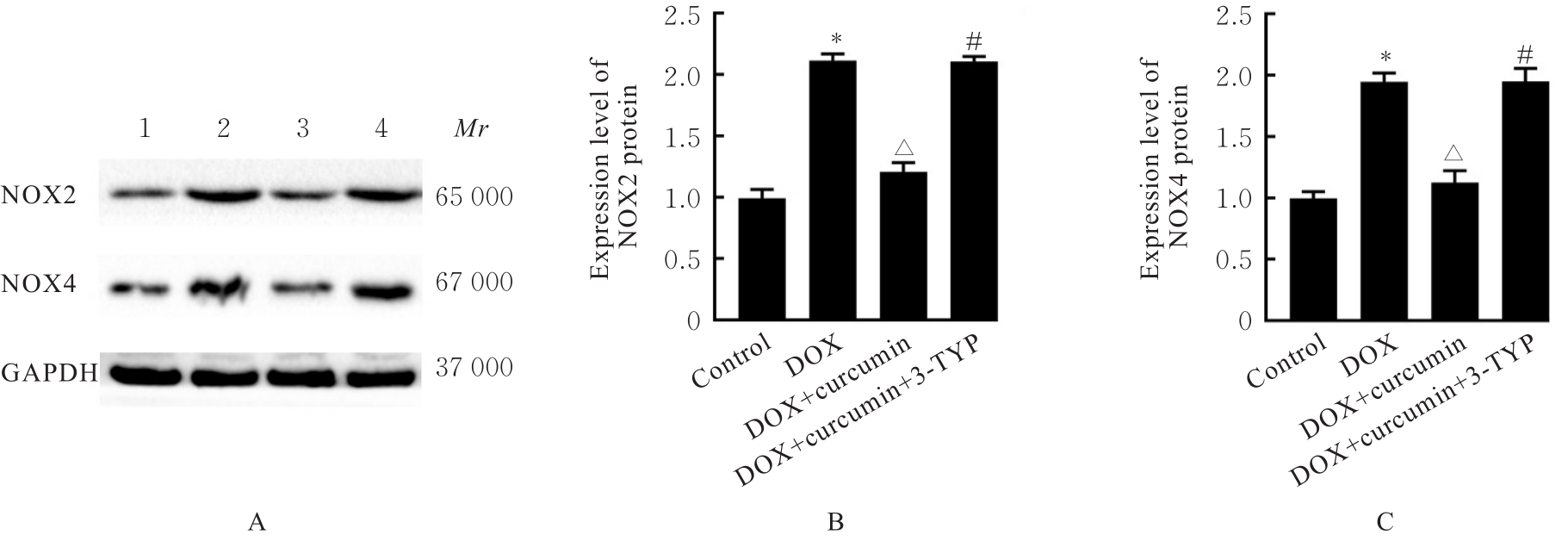| 1 |
CURIGLIANO G, CARDINALE D, DENT S, et al. Cardiotoxicity of anticancer treatments: Epidemiology, detection, and management[J]. CA Cancer J Clin, 2016, 66(4): 309-325.
|
| 2 |
HUANG J Q, WU R D, CHEN L Y, et al. Understanding anthracycline cardiotoxicity from mitochondrial aspect[J]. Front Pharmacol, 2022, 13: 811406.
|
| 3 |
ZHANG S, LIU X B, BAWA-KHALFE T, et al. Identification of the molecular basis of doxorubicin-induced cardiotoxicity[J]. Nat Med, 2012, 18(11): 1639-1642.
|
| 4 |
CHEN S, CHEN J W, DU W T, et al. PDE10A inactivation prevents doxorubicin-induced cardiotoxicity and tumor growth[J]. Circ Res, 2023, 133(2): 138-157.
|
| 5 |
RAWAT P S, JAISWAL A, KHURANA A, et al. Doxorubicin-induced cardiotoxicity: an update on the molecular mechanism and novel therapeutic strategies for effective management[J]. Biomedecine Pharmacother, 2021, 139: 111708.
|
| 6 |
KONG C Y, GUO Z, SONG P, et al. Underlying the mechanisms of doxorubicin-induced acute cardiotoxicity: oxidative stress and cell death[J]. Int J Biol Sci, 2022, 18(2): 760-770.
|
| 7 |
SANGWENI N F, GABUZA K, HUISAMEN B, et al. Molecular insights into the pathophysiology of doxorubicin-induced cardiotoxicity: a graphical representation[J]. Arch Toxicol, 2022, 96(6): 1541-1550.
|
| 8 |
DING M G, SHI R, FU F, et al. Paeonol protects against doxorubicin-induced cardiotoxicity by promoting Mfn2-mediated mitochondrial fusion through activating the PKCε-Stat3 pathway[J]. J Adv Res, 2023, 47: 151-162.
|
| 9 |
HEIDARI H, BAGHERNIYA M, MAJEED M, et al. Curcumin-piperine co-supplementation and human health: a comprehensive review of preclinical and clinical studies[J]. Phytother Res, 2023, 37(4): 1462-1487.
|
| 10 |
PANKNIN T M, HOWE C L, HAUER M, et al. Curcumin supplementation and human disease: a scoping review of clinical trials[J]. Int J Mol Sci, 2023, 24(5): 4476.
|
| 11 |
ASHRAFIZADEH M, AHMADI Z, MOHAMMADINEJAD R, et al. Curcumin activates the Nrf2 pathway and induces cellular protection against oxidative injury[J]. Curr Mol Med, 2020, 20(2): 116-133.
|
| 12 |
PENG Y, AO M Y, DONG B H, et al. Anti-inflammatory effects of curcumin in the inflammatory diseases: status, limitations and countermeasures[J]. Drug Des Devel Ther, 2021, 15: 4503-4525.
|
| 13 |
IBRAHIM FOUAD G, AHMED K A. Curcumin ameliorates doxorubicin-induced cardiotoxicity and hepatotoxicity via suppressing oxidative stress and modulating iNOS, NF-κB, and TNF-α in rats[J]. Cardiovasc Toxicol, 2022, 22(2): 152-166.
|
| 14 |
BENZER F, KANDEMIR F M, KUCUKLER S, et al. Chemoprotective effects of curcumin on doxorubicin-induced nephrotoxicity in wistar rats: by modulating inflammatory cytokines, apoptosis, oxidative stress and oxidative DNA damage[J]. Arch Physiol Biochem, 2018, 124(5): 448-457.
|
| 15 |
HU P, LI K Q, PENG X X, et al. Curcumin derived from medicinal homologous foods: its main signals in immunoregulation of oxidative stress, inflammation, and apoptosis[J]. Front Immunol, 2023, 14: 1233652.
|
| 16 |
ZHANG T, ZHANG Y, CUI M Y, et al. CaMKⅡ is a RIP3 substrate mediating ischemia-and oxidative stress-induced myocardial necroptosis[J]. Nat Med, 2016, 22(2): 175-182.
|
| 17 |
YU W, QIN X, ZHANG Y C, et al. Curcumin suppresses doxorubicin-induced cardiomyocyte pyroptosis via a PI3K/Akt/mTOR-dependent manner[J]. Cardiovasc Diagn Ther, 2020, 10(4): 752-769.
|
| 18 |
WU J J, YANG Y L, GAO Y F, et al. Melatonin attenuates anoxia/reoxygenation injury by inhibiting excessive mitophagy through the MT2/SIRT3/FoxO3a signaling pathway in H9c2 cells[J]. Drug Des Devel Ther, 2020, 14: 2047-2060.
|
| 19 |
KUNO A, HOSODA R, TSUKAMOTO M, et al. SIRT1 in the cardiomyocyte counteracts doxorubicin-induced cardiotoxicity via regulating histone H2AX[J]. Cardiovasc Res, 2023, 118(17): 3360-3373.
|
| 20 |
吕云玲, 卢 娜, 张明明, 等. 下腔静脉变异率联合脉搏指示连续心排血量在心肌梗死后心源性休克容量管理中应用研究[J]. 中国实用内科杂志, 2024, 44(3):223-227.
|
| 21 |
Songbo M, Lang H, Xinyong C, et al. Oxidative stress injury in doxorubicin-induced cardiotoxicity[J]. Toxicol Lett, 2019, 307: 41-48.
|
| 22 |
Zhang J, Xiang H, Liu J, et al. Mitochondrial Sirtuin 3: new emerging biological function and therapeutic target[J]. Theranostics, 2020, 10(18): 8315-8342.
|
| 23 |
Cao M, Zhao Q, Sun X, et al. Sirtuin 3: Emerging therapeutic target for cardiovascular diseases[J]. Free Radic Biol Med, 2022, 180: 63-74.
|
| 24 |
Zhang J, Li W, Xue S, et al. Qishen granule attenuates doxorubicin-induced cardiotoxicity by protecting mitochondrial function and reducing oxidative stress through regulation of Sirtuin3[J]. J Ethnopharmacol, 2023, 319(Pt 1): 117134.
|
| 25 |
Barcena ML, Tonini G, Haritonow N, et al. Sex and age differences in AMPK phosphorylation, mitochondrial homeostasis, and inflammation in hearts from inflammatory cardiomyopathy patients[J]. Aging Cell, 2023, 22(8): e13894.
|


